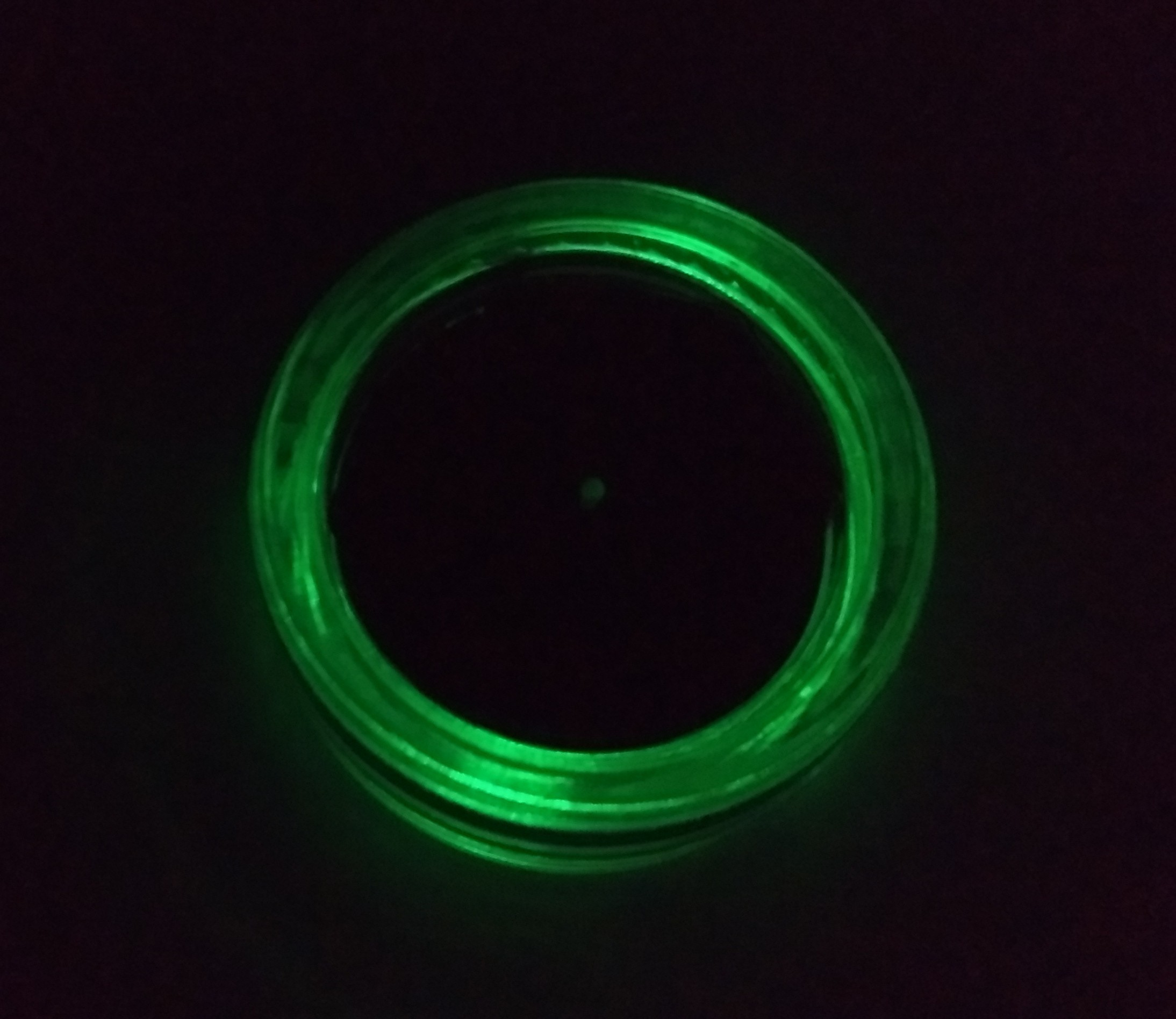I populated the first V3.0 PCB today. It's actually been through a few iterations, but I didn't even bother filling any of the earlier boards. This one is finally worth building. The board is smaller now (23mm diameter), so it fits inside cheap, widely available "5g" polystyrene jars, but still uses an inexpensive replaceable CR2032 for power.

This first PCB uses an OSLON Signal Verde LED. I tuned this particular PCB to a 2-year run-time (12.5 uA) on a CR2032, and it blinks at 157 Hz. The breadboarded version needed to be tuned to 123Hz to achieve the same run time (probably due to the 30% inductor tolerance). The ability to fine-tune the current draw was one of the design goals of the V3 (as was fitting inside these jars).
I also have PCBs for Luxeon C and Cree XPE / Cree XPE2 LEDs. They are identical to this one except for the LED pads.
Here's a visual comparison with the previous two generations for reference:

One of the key differences is the use of a through-hole CR2032 holder, which is actually smaller in diameter than the surface-mount version (since the through hole doesn't need flat mounting tabs). This was the final change required to fit the PCB inside the jar.
Tuned to the same 2-year run time as the V2.0, the V3.0 is noticeably brighter. It's roughly as bright as the V1.0 (which only runs 1 year). But, you can tune the V3.0's brightness to last from less than 1 to more than 10 years on a CR2032 cell.
I'll put together a more detailed post for those wanting to build some of this new version, including a BOM and placement diagram. The PCB designs are already in GitHub, I just need to polish the software a little and put it up there.
EDIT: I discovered that the clear jar makes a nice dim ring of light when placed upside down. I usually keep a few of these lights on my nightstand, but the light can actually be enough to bother me. Being able to attenuate the output somewhat by turning them upside down is an added bonus, especially since it looks so cool.

 Ted Yapo
Ted Yapo
Discussions
Become a Hackaday.io Member
Create an account to leave a comment. Already have an account? Log In.
Thanks for the confirmation. This comment about the GTP layer led me to confirm what I had done. I inadvertently gave OshStencils the top solder mask instead of the top paste. I'll take this up with them. I know - rookie mistake.
Are you sure? yes | no
It would probably work anyway - you'll just end up with more paste on there. It might just work like a thicker stencil.
I'll add info about how to generate the stencil on the release page.
Are you sure? yes | no
Nice work. Thanks for your persistence.
I am ramping up to build a handful of the V3 units. The BOM on GitHub appears to be specific to the V2.2 version. Are you planning on a V3 BOM?
I did upload the V3 Gerber files into OshStencil. It looks like a 5mil Kapton stencil is less than $10 shipped. I think I can handle that. :-)
edit: Never mind on the BOM question. I just found it. Thanks!
Are you sure? yes | no
Just double-check the stencil before ordering. At one time, I had some missing paste apertures in my component libraries. I'll check, too, when I get a few minutes.
A stencil is a good idea on this version - the 74LVC1G123 has fine-pitched pins which created solder bridges when I applied too much paste with a syringe.
I haven't updated the GitHub docs page yet; I might get to it later today.
Also, the monostable resistor (and sometimes the inductor) are different depending on the LED, make sure you choose the right set (explained in the next log).
EDIT: I uploaded the GTP file to OSH Stencils, and it looks good.
Are you sure? yes | no
Thanks for the comment on the GTP layer. It prompted me to double-check what I had done with OshStencils. Turns out I gave them the GTS layer by accident. Interestingly, their system caught it and sent me an email walking me through how to correct it. A much better resolution than the minor panic I was in trying to reach them to cancel the order. I have to say, I like their business model. Hopefully we will soon see a way to make stencils available to the public, similar to the way OshPark does PCBs.
Are you sure? yes | no